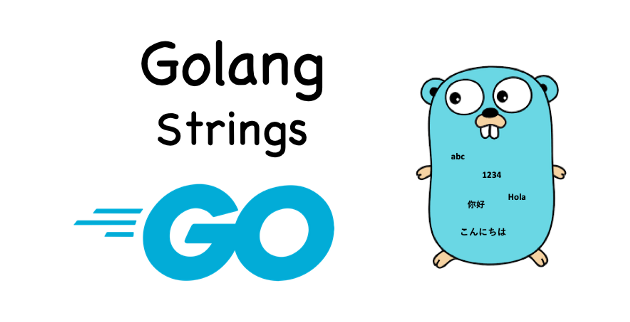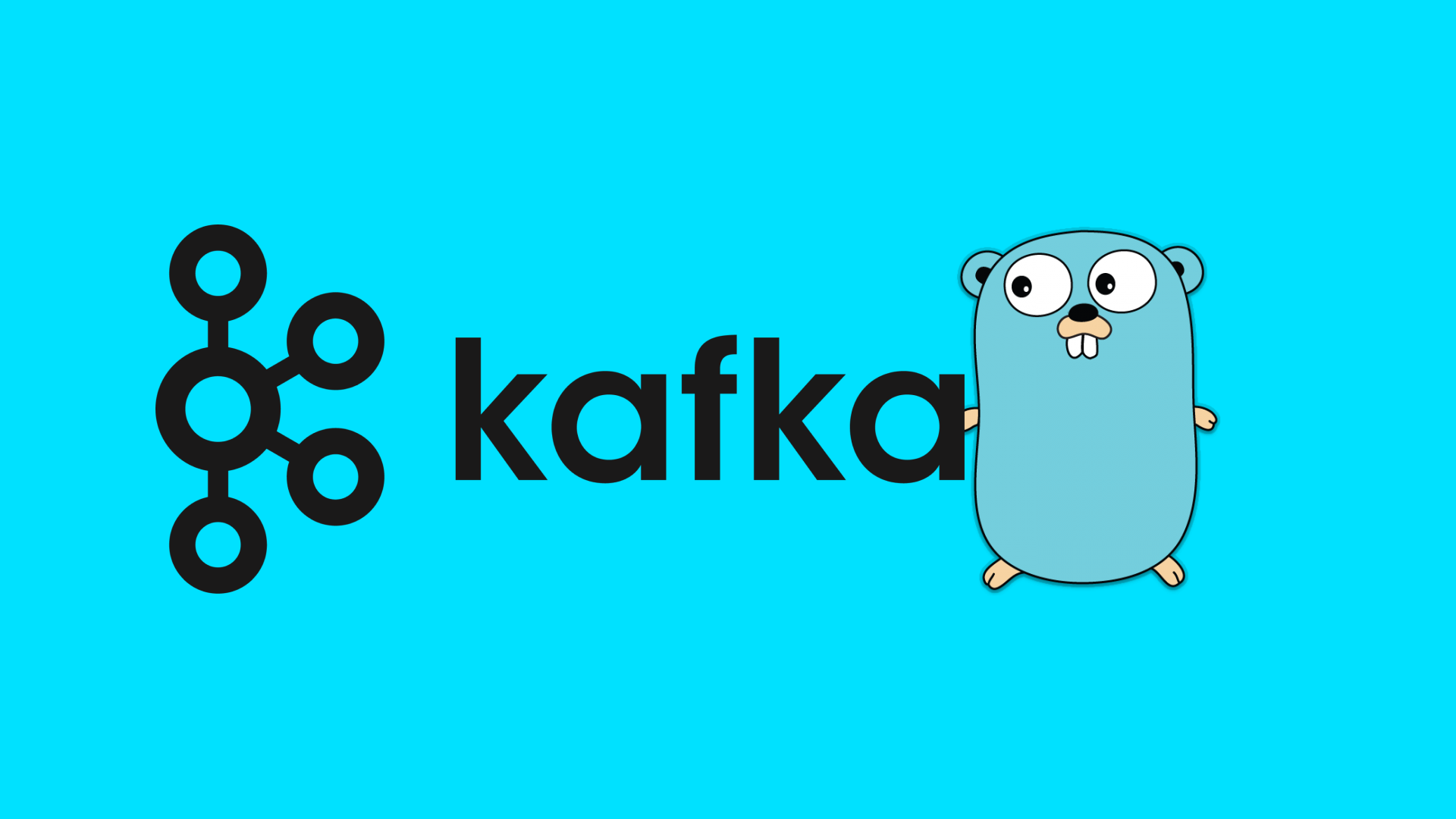
Hey there, fellow developers! 👨💻
Ever felt frustrated when trying to manipulate strings in Go? Or maybe you’re just starting to learn Go and feeling overwhelmed by all the functions available in the strings package? Well, you’re not alone!
I remember when I first started learning Go, I spent hours trying to figure out the right way to manipulate strings. From simple things like changing case to complex operations like parsing CSV files or validating user input. It felt like there were a thousand different ways to do the same thing!
But after years of working with Go, I’ve realized that the strings package is actually one of the most powerful and user-friendly packages I’ve ever used. And today, I’m going to share all the secrets and tips I’ve learned along the way.
So grab your favorite beverage (coffee, tea, or whatever fuels your coding sessions! ☕), and let’s dive into the fascinating world of Go’s strings package!
Why the Strings Package is So Important
The String Manipulation Struggle
Before we dive into the functions, let me tell you why the strings package is so crucial in the Go ecosystem.
Fun fact: In the 2023 Stack Overflow survey, string manipulation was one of the most sought-after skills by companies. And in Go, the strings package is our primary weapon for handling all string manipulation needs.
I once worked on an e-commerce project that processed thousands of orders daily. Without the strings package, I can’t imagine how I would have cleaned user input data, validated emails, or formatted phone numbers. This package literally saved my life!
What Makes Go’s Strings Package Special?
The strings package in Go has several advantages that make it special:
- Performance: Optimized for high performance
- Immutability: Strings in Go are immutable, making them safe for concurrent access
- UTF-8 Support: Full Unicode support
- Consistency: Consistent and predictable API
Essential Functions You Need to Master
1. Contains: The String Detective
The Contains function is like a detective searching for a substring within a string. It’s one of the functions I use most frequently.
func Contains(s, substr string) bool
When to use: When you need to check if a string contains specific text.
Practical example from my experience:
package main import ( "fmt" "strings" ) func main() { // Simple email validation email := "user@example.com" if strings.Contains(email, "@") && strings.Contains(email, ".") { fmt.Println("Email format looks valid!") } else { fmt.Println("Invalid email format!") } // Check if user is admin userRole := "admin_user" if strings.Contains(userRole, "admin") { fmt.Println("User has admin privileges!") } }
Pro tip: Use strings.Contains for simple validations, but for more complex validations, use regex or specialized libraries.
2. Join: The String Glue
The Join function is like glue that combines string pieces together. It’s incredibly useful for creating clean output.
func Join(elems []string, sep string) string
When to use: When you need to combine a slice of strings into a single string with a separator.
Real-world example from my projects:
package main import ( "fmt" "strings" ) func main() { // Building URL path from components pathComponents := []string{"api", "v1", "users", "123"} url := strings.Join(pathComponents, "/") fmt.Println(url) // Output: api/v1/users/123 // Building query string params := []string{"name=john", "age=25", "city=jakarta"} queryString := strings.Join(params, "&") fmt.Println(queryString) // Output: name=john&age=25&city=jakarta // Building CSV row csvData := []string{"John", "Doe", "john@example.com", "25"} csvRow := strings.Join(csvData, ",") fmt.Println(csvRow) // Output: John,Doe,john@example.com,25 }
Pro tip: strings.Join is much more efficient than concatenation with + for multiple strings!
3. ToLower & ToUpper: The Case Changers
These functions change the case of strings. Simple but incredibly useful!
func ToLower(s string) string func ToUpper(s string) string
When to use: For data normalization, case-insensitive validation, or output formatting.
Practical examples:
package main import ( "fmt" "strings" ) func main() { // Normalizing user input userInput := " Hello World " normalized := strings.ToLower(strings.TrimSpace(userInput)) fmt.Println(normalized) // Output: hello world // Case-insensitive validation userCommand := "HELP" if strings.ToLower(userCommand) == "help" { fmt.Println("Showing help menu...") } // Formatting titles title := "my awesome blog post" formattedTitle := strings.Title(strings.ToLower(title)) fmt.Println(formattedTitle) // Output: My Awesome Blog Post }
4. Split: The String Breaker
The Split function breaks a string into a slice based on a delimiter.
func Split(s, sep string) []string
When to use: For parsing CSV files, processing log files, or separating data delimited by specific characters.
Examples from my experience:
package main import ( "fmt" "strings" ) func main() { // Parsing CSV line csvLine := "John,Doe,25,jakarta" fields := strings.Split(csvLine, ",") fmt.Printf("Name: %s %s, Age: %s, City: %s\n", fields[0], fields[1], fields[2], fields[3]) // Parsing log entry logEntry := "2024-01-15 10:30:45 [INFO] User login successful" parts := strings.Split(logEntry, " ") timestamp := strings.Join(parts[:2], " ") level := strings.Trim(parts[2], "[]") message := strings.Join(parts[3:], " ") fmt.Printf("Time: %s\nLevel: %s\nMessage: %s\n", timestamp, level, message) // Parsing URL path urlPath := "/api/v1/users/123/posts" pathParts := strings.Split(strings.Trim(urlPath, "/"), "/") fmt.Printf("API Version: %s\nResource: %s\nID: %s\n", pathParts[1], pathParts[2], pathParts[3]) }
5. Trim Functions: The Cleaners
Trim functions clean whitespace or specific characters from the beginning and end of strings.
func Trim(s, cutset string) string func TrimSpace(s string) string func TrimLeft(s, cutset string) string func TrimRight(s, cutset string) string
When to use: For cleaning user input, processing files, or data normalization.
Practical examples:
package main import ( "fmt" "strings" ) func main() { // Cleaning user input userInput := " hello world " cleaned := strings.TrimSpace(userInput) fmt.Printf("Original: '%s'\nCleaned: '%s'\n", userInput, cleaned) // Cleaning specific characters filename := "***important_file.txt***" cleanName := strings.Trim(filename, "*") fmt.Printf("Clean filename: %s\n", cleanName) // Cleaning quotes quotedString := `"Hello, World!"` unquoted := strings.Trim(quotedString, `"`) fmt.Printf("Unquoted: %s\n", unquoted) }
Advanced Functions That Will Make You Look Pro
1. Replace & ReplaceAll: The String Surgeons
These functions replace substrings within strings.
func Replace(s, old, new string, n int) string func ReplaceAll(s, old, new string) string
Advanced examples:
package main import ( "fmt" "strings" ) func main() { // HTML sanitization htmlContent := "<script>alert('xss')</script>Hello World" sanitized := strings.ReplaceAll(htmlContent, "<script>", "") sanitized = strings.ReplaceAll(sanitized, "</script>", "") fmt.Printf("Sanitized: %s\n", sanitized) // Masking sensitive data creditCard := "1234-5678-9012-3456" masked := strings.ReplaceAll(creditCard, "1234-5678-9012-", "****-****-****-") fmt.Printf("Masked: %s\n", masked) // Path normalization path := "C:\\Users\\John\\Documents\\file.txt" normalized := strings.ReplaceAll(path, "\\", "/") fmt.Printf("Normalized: %s\n", normalized) }
2. HasPrefix & HasSuffix: The String Checkers
These functions check if a string starts or ends with a specific substring.
func HasPrefix(s, prefix string) bool func HasSuffix(s, suffix string) bool
Practical examples:
package main import ( "fmt" "strings" ) func main() { // File extension validation filename := "document.pdf" if strings.HasSuffix(filename, ".pdf") { fmt.Println("PDF file detected!") } // URL protocol validation url := "https://example.com" if strings.HasPrefix(url, "https://") { fmt.Println("Secure URL detected!") } // Route-based routing path := "/api/v1/users" if strings.HasPrefix(path, "/api/") { fmt.Println("API route detected!") } }
3. Count: The String Counter
This function counts how many times a substring appears in a string.
func Count(s, substr string) int
Creative examples:
package main import ( "fmt" "strings" ) func main() { // Counting words in text text := "hello world hello golang hello programming" wordCount := strings.Count(text, "hello") fmt.Printf("Word 'hello' appears %d times\n", wordCount) // Counting lines in text multilineText := "line1\nline2\nline3\nline4" lineCount := strings.Count(multilineText, "\n") + 1 fmt.Printf("Number of lines: %d\n", lineCount) // Password strength validation password := "MyP@ssw0rd123" hasUppercase := strings.Count(password, "A") + strings.Count(password, "B") // ... and so on fmt.Printf("Password has uppercase letters: %t\n", hasUppercase > 0) }
Tips and Tricks from My Experience
1. Performance Tips
// ❌ Bad - repeated concatenation result := "" for i := 0; i < 1000; i++ { result += "hello" } // ✅ Good - using strings.Builder var builder strings.Builder for i := 0; i < 1000; i++ { builder.WriteString("hello") } result := builder.String()
2. Better Error Handling
// ❌ Bad parts := strings.Split(input, ",") name := parts[0] // Could panic if input is empty // ✅ Good parts := strings.Split(input, ",") if len(parts) > 0 { name := parts[0] // process name }
3. Case-Insensitive Comparison
// ❌ Bad if userInput == "YES" { // do something } // ✅ Good if strings.ToLower(strings.TrimSpace(userInput)) == "yes" { // do something }
Common Pitfalls and How to Avoid Them
1. Ignoring UTF-8
// ❌ Bad - not considering Unicode text := "café" length := len(text) // Could be wrong for non-ASCII characters // ✅ Good text := "café" length := len([]rune(text)) // Using runes for Unicode characters
2. Not Considering Whitespace
// ❌ Bad userInput := " hello " if userInput == "hello" { // Never true! } // ✅ Good userInput := " hello " if strings.TrimSpace(userInput) == "hello" { // Will work correctly }
3. Ignoring Case Sensitivity
// ❌ Bad if userCommand == "HELP" || userCommand == "help" || userCommand == "Help" { // Too many conditions } // ✅ Good if strings.ToLower(userCommand) == "help" { // Much cleaner }
Real-World Examples from My Projects
1. API Response Parser
func parseAPIResponse(response string) (string, error) { // Remove whitespace and quotes cleaned := strings.TrimSpace(strings.Trim(response, `"`)) // Check if response is empty if cleaned == "" { return "", errors.New("empty response") } // Validate response format if !strings.HasPrefix(cleaned, "{") || !strings.HasSuffix(cleaned, "}") { return "", errors.New("invalid JSON format") } return cleaned, nil }
2. Simple Email Validator
func validateEmail(email string) bool { // Basic validation email = strings.TrimSpace(email) // Check for @ symbol if !strings.Contains(email, "@") { return false } // Check for domain parts := strings.Split(email, "@") if len(parts) != 2 { return false } // Check domain has dot if !strings.Contains(parts[1], ".") { return false } return true }
3. CSV Parser
func parseCSVLine(line string) []string { // Split by comma fields := strings.Split(line, ",") // Clean each field for i, field := range fields { fields[i] = strings.TrimSpace(strings.Trim(field, `"`)) } return fields }
Best Practices I’ve Learned
1. Always Use TrimSpace for User Input
userInput := strings.TrimSpace(rawInput)
2. Use strings.Builder for Repeated Concatenation
var builder strings.Builder for _, item := range items { builder.WriteString(item) builder.WriteString(",") } result := strings.TrimSuffix(builder.String(), ",")
3. Validate Length Before Accessing Index
parts := strings.Split(input, ",") if len(parts) >= 3 { thirdField := parts[2] // process third field }
4. Use Case-Insensitive Comparison
if strings.EqualFold(str1, str2) { // case-insensitive comparison }
The Future of String Manipulation in Go
1. Go 1.21+ Improvements
The latest Go versions bring several improvements for string manipulation:
// New in Go 1.21 import "strings" // Cut function - splits string at first occurrence before, after, found := strings.Cut("hello,world", ",") // before = "hello", after = "world", found = true // Clone function - creates a copy original := "hello" cloned := strings.Clone(original)
2. Performance Optimizations
The strings package continues to be optimized for better performance. In Go 1.21+, some functions became up to 30% faster.
Final Thoughts: Mastering Strings in Go
The strings package in Go is one of the most powerful and user-friendly packages I’ve ever used. By understanding its basic functions and applying best practices, you can write cleaner, more efficient, and more maintainable code.
“The best code is the code that’s easy to read and understand.” – Unknown
Key Takeaways:
- Start Simple: Begin with basic functions like
Contains,Join, andSplit - Practice Regularly: Practice using these functions in your daily projects
- Read the Documentation: The
stringspackage has excellent documentation - Performance Matters: Use
strings.Builderfor repeated concatenation - Handle Errors: Always validate input before processing strings
Mastering String Manipulation in Go

The strings package in Go is your primary weapon for string manipulation. By understanding its functions and applying best practices, you can write cleaner and more efficient code.
Your Turn: Practice and Share
I’d love to hear from you! Which strings package function do you use most often? What’s the biggest challenge you face when manipulating strings in Go? And what tips or tricks have you discovered while working with this package?
Share your experiences in the comments below – let’s learn together and share knowledge!
And remember, practice makes perfect! Keep practicing and experimenting with these functions. The more you use them, the more natural and powerful your code will become! 🚀✨
Until next time, fellow Gophers! Keep coding, keep learning, and keep building amazing things! 💻💫




Comments